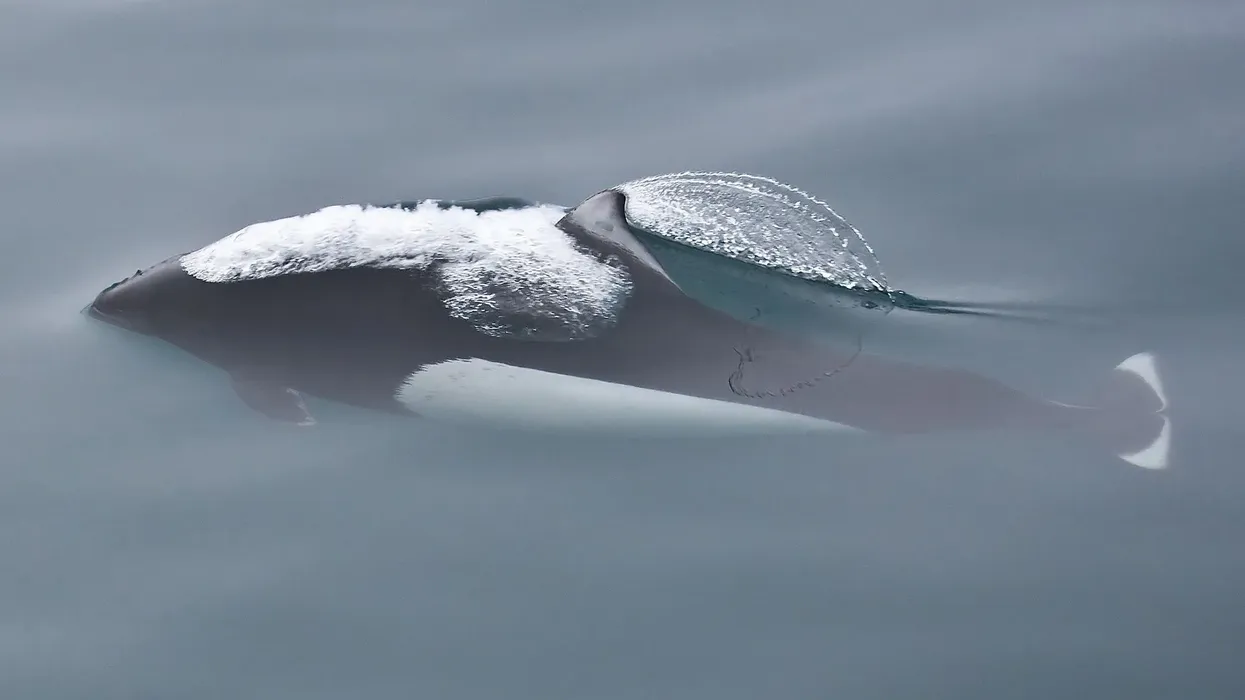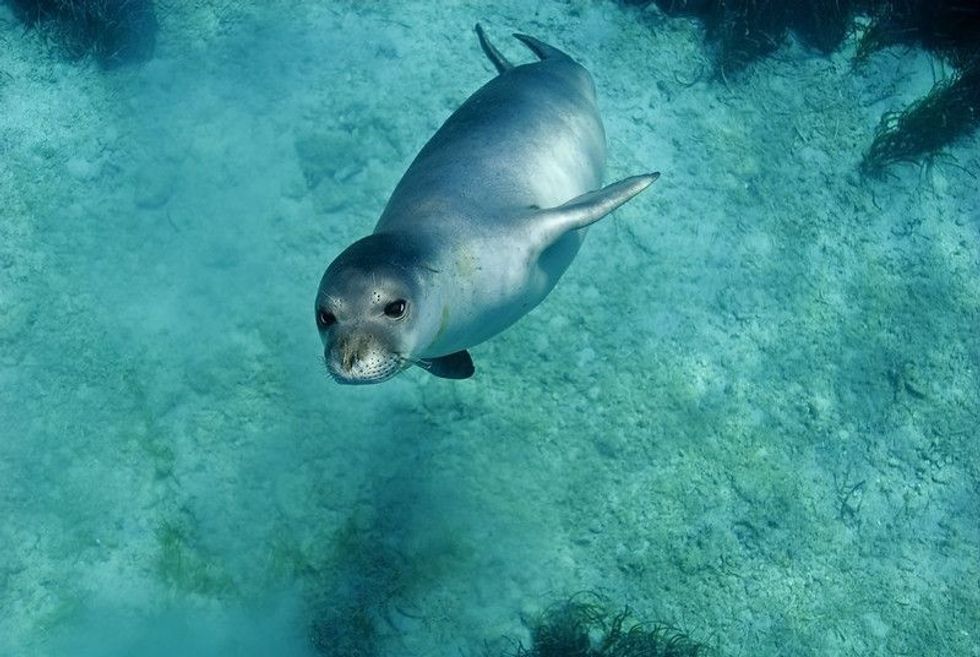Largest among the seven species of the porpoise family, the Dall's porpoise is an exuberant aquatic species. The name has been derived from W.H.
Dall, an American naturalist who has been credited for collecting the first original specimen. The contributions of the American naturalist also helped Fredrick W. True, a mammal curator, to prepare the first official description of the species. Dall's porpoises have been further classified into two subspecies, the True's porpoise (Phocoenoides dalli truei) and Dall's porpoise (Phocoenoides dalli dalli).
However, the population trend of Dall's porpoises is unknown which implies that the population might be susceptible to vulnerability. According to the International Union for Conservation of Nature (IUCN) Red List, threats include exploitative fishing and harvesting, pollution from waste discharge into water bodies, and other human activities.
Water contaminants can severely affect the reproductive abilities of males. Also, predatory fishes like sharks and killer whales hunt down porpoises.
The North Pacific Ocean is replete with Dall's porpoises. If you want to spot a Dall's porpoise, Puget Sound located along the northwest Pacific coast of Washington, USA, would be the best place to find one. You can also head towards the coast of southern California where their population is widespread.
For more relatable content, check out these stingray facts and ray facts for kids.
Dall's Porpoise Interesting Facts
What type of animal is Dall's porpoise?
Although identical to dolphins, a Dall's porpoise is an aquatic species of porpoise. So how do you tell both these warm-blooded mammals apart? A porpoise doesn't possess an elongated beak or streamlined body structure of a dolphin. It has a smaller mouth with spade-shaped teeth.
What class of animal does Dall's porpoise belong to?
Dall's porpoises have been classified under the Mammalia class. Identified by the scientific name, Phocoenoides dalli, Dall's porpoises are the sole members of the Phocoenoides genus.
How many Dall's porpoises are there in the world?
With their widespread global population, the number of adult Dall's porpoises has been estimated at a total of more than 1.2 million.
Where does Dall's porpoise live?
Dall's porpoises are residents of the North Pacific Ocean from southern California to Alaska. They can be traced to the adjoining Okhotsk Sea, the Sea of Japan, and the Bering Sea.
These marine animals love to dwell in deep waters and can be found in great depths of about 492-820 ft (150 to 250 m) in the coastal waters of British Columbia.
Dall's porpoises are not migratory but they do cover short offshore distances depending on seasonal changes. However, the subspecies True's porpoise engages in migration between the offshore coastal waters of Japan during winter and the Okhotsk Sea in summers.
What is Dall's porpoise habitat?
The habitat range of Dall's porpoises consists of deep pelagic and coastal waters of the North Pacific as these animals prefer to stay in colder temperatures of around 64 F (17.7 C). Their habitat includes narrow channels and fjords.
Who do Dall's porpoises live with?
These marine animals mostly wander in groups of 10-20 and sometimes groups combine to include thousands of porpoises in the North Pacific Ocean.
How long does Dall's porpoise live?
The average lifespan of this species such as a harbor porpoise has a range of 15-20 years. However, they can survive for a longer period of 22 years. On the other hand, unrestrained human activities can potentially shorten the lifespan of these marine mammals. Squid and salmon drift-net fisheries in Japan have increased the mortality rates of Dall's porpoises.
How do they reproduce?
Reproduction and active breeding among these small cetaceans is noticeable during the months of summer. Sexual maturity is attained by females within four to seven years while the males mature by three and a half to eight years.
After successful copulation, females have a gestation period for 10-12 months after which they give birth to a calf. The calf remains under the care of the females, being nursed by them until they become capable enough to thrive independently.
What is their conservation status?
The International Union for Conservation of Nature (IUCN) Red List categorizes the Dall's porpoise under the Least Concern group.
Dall's Porpoise Fun Facts
What do Dall's porpoises look like?
Dall's porpoises have a prominent black and white-colored body. The entire body comes in a dark black hue with white markings on its flanks and belly. With a robust body, short beak, small flippers, and a small head this species is the largest existing porpoise.
Sexual dimorphism has been identified between males and females. A protruding hump can be located anterior to the dorsal fin among the males during the breeding period.
They are slightly larger than their female counterparts. Calves exhibit a grayish black hue with dull white markings on their flanks. The reproduction cycle reoccurs every one to three years among fertile females.

How cute are they?
Just like dolphins, porpoises are undeniably cute! A Dall's porpoise calf is too adorable to resist.
How do they communicate?
Generally, porpoises emit high-frequency whistling sounds to interact with each other. Echolocation helps them to locate prey and also to navigate through places.
How big is Dall's porpoise?
The average length of this porpoise species ranges from about 83-87 in (210-220 cm). Females are slightly smaller measuring in the range of 63-81 in (160-206 cm). The species is smaller than striped dolphins which have an average body length of 96-102 in (244-259 cm).
How fast can Dall's porpoise swim?
This marine species is highly agile and spontaneous. A Dall's porpoise speed can reach 34 mph (55 kph).
How much does Dall's porpoise weigh?
Since these porpoises have a large size, they come with a massive weight of approximately 441 lb (200 kg).
What are the male and female names of the species?
Neither sex of this species are called by particular names. They are commonly called a male and female Dall's porpoise.
What would you call a baby Dall's porpoise?
A baby Dall's porpoise is called a calf or pup.
What do they eat?
Dall's porpoises are carnivorous feeders and they can take deep plunges of about 1,640 ft (500 m) to feed on a variety of small schooling fish, crustaceans, and cephalopods. Small schooling fish such as herring, hake, and anchovies, octopus, and squid.
Shrimp and crabs are included in their high-protein diet. Due to these food habits, Dall's porpoise digestion takes about eight long hours.
Are they dangerous?
These lively marine mammals are anything but dangerous for humans. Don't fall for their gentle appearance because they can be mischievous. They can also be aggressive while hunting down prey.
Would they make a good pet?
The otherwise sociable porpoises are pretty shy when it comes to interactions with humans. They prefer to maintain a safe distance from the human world, unlike dolphins. Moreover, activities like capturing, hunting, or killing marine animals have been criminalized under the US jurisdiction. Therefore, the behavior of keeping porpoises as pets is not legal.
Did you know...
Since Dall's porpoises are often confused with baby orca or killer whales for their similar black and white coloration, let's go for a Dall's porpoise vs orca comparison. Compared to killer whales, Dall's porpoises are smaller in size and possess a triangle-shaped dorsal fin. Additionally, the saddle patches are missing in these animals.
What about Dall's porpoise vs harbor porpoise? Well, the most significant distinction is that while the former is the largest porpoise species, the latter is the smallest. Unlike Dall's porpoises, the latter comes in a dark gray hue.
There are seven porpoise species namely spectacled porpoise which are the vaquita, Burmeister’s porpoise, Dall's porpoise, harbor porpoise, narrow-ridged finless porpoise, and Indo-Pacific finless porpoise.
Like sea lions and dolphins, Dall's porpoises enjoy bow-riding in the waves generated by boats and small ships.
Where in Alaska can you find Dall's porpoises?
Dall's porpoises can be found in the coastal waters of Alaska extending up to the north to the Bering Sea. They are pretty abundant in the Gulf of Alaska with an approximate evaluation of 83,000 mature individuals.
How do Dall's porpoises breathe underwater?
Did you know that a Dall's porpoise rooster tail has a unique role to play? Porpoises cannot actually breathe underwater due to the lack of gills.
They breathe through the blowhole on their head. The rooster tail, a formation of water-spray caused by their swimming techniques, aids these small cetaceans to breathe underwater. A splash of the tail produces a hollow space which allows these animals to take in oxygen underwater.
Here at Kidadl, we have carefully created lots of interesting family-friendly animal facts for everyone to discover! Learn more about some other fish from our minke whale facts and irrawaddy dolphin facts pages.
You can even occupy yourself at home by coloring in one of our free printable Dall's porpoise coloring pages.








